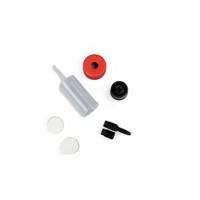The ability to manipulate the murine genome via the use of gene targeting in pluripotent embryonic stem cells is arguably one of the most important scientific achievements of the last decade (1 –4 ). This technology holds the potential to produce murine strains and cell-culture systems that harbor an allelic series of mutations at almost any given locus, As a result, models can now be generated in complex eukaryotic systems in which a gene of interest is no longer expressed (“null” allele) or in which some aspect of its function or expression has been altered. The techniques commonly used in the generation of null alleles have been the focus of many excellent review articles, books, and laboratory manuals (5 –9 ). Therefore, our goal in preparing this chapter was to draw attention to gene-targeting strategies that provide mechanistic insight when null alleles provide incomplete information. Additionally, we discuss some examples of how allelic series can sometimes yield surprising results that arise when different laboratories use different approaches to create a null mutation at the same locus. We would like to discuss how gene targeting has proven to be a useful technique for pharmacologists. However, owing to the nascent stage of the technology, few examples are available in this area. Therefore, our presentation will be more general in nature. First, we provide an overvrew of the most popular gene-targeting approaches in use today. Second, we describe gene-targeting experiments at the CFTR locus, arguably one of the largest allelic series to date. Third, we provide a brief review of targeting experiments at loci encoding cytochrome P450 structural genes and their regulators. We hope that the chapter will help the reader appreciate how gene targeting can be used to generate novel mouse models that are useful in drug design and for the investigation of metabolic pathways and the mechanism of action of toxicants.






